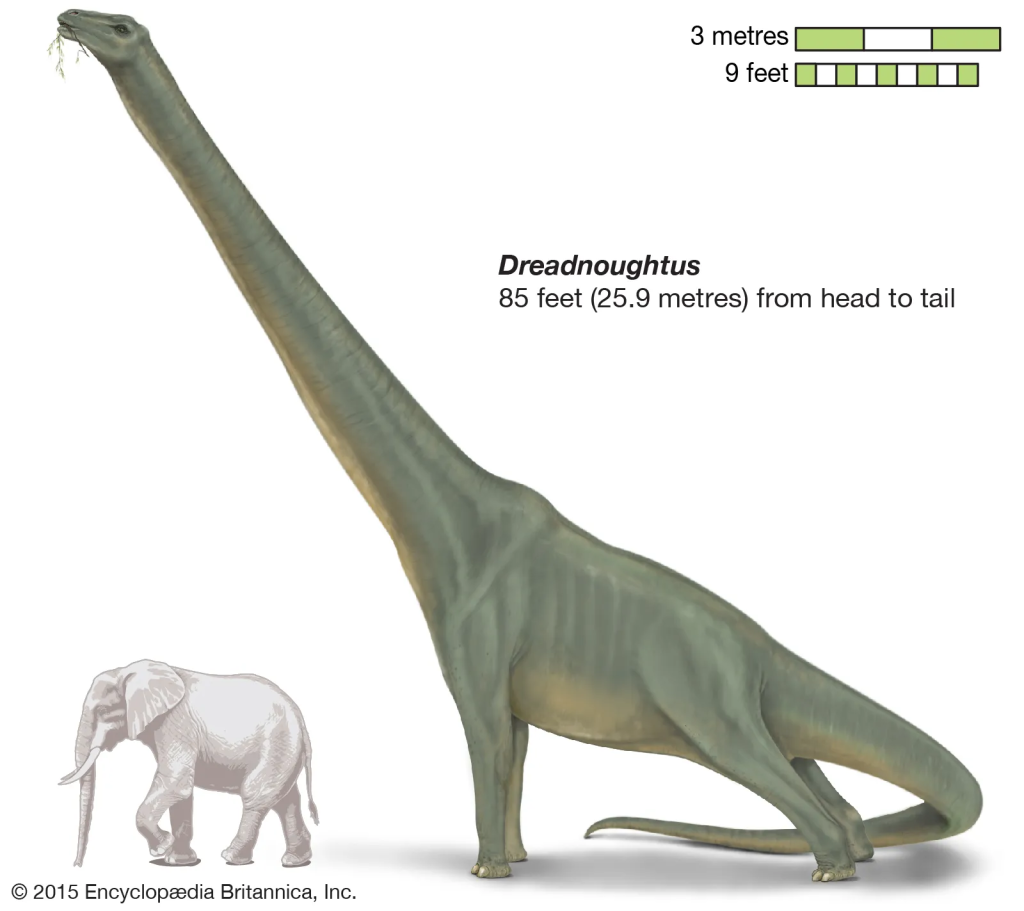Titanosaurs: 8 of the World’s Biggest Dinosaurs
When it comes to sheer mass, the blue whale (Balaenoptera musculus) takes the crown as Earth’s largest mammal, weighing approximately 136 metric tons (150 tons) and stretching over 30 meters (98 feet) in length. However, the terrestrial realm tells a different story. While today’s elephants claim the title of largest land animal, delving into the annals of history reveals even grander creatures.
During the Mesozoic Era, spanning from about 252 million to 66 million years ago, numerous dinosaurs surpassed modern-day land mammals in both length and weight. Among these ancient giants, the sauropods stood out, characterized by their quadrupedal stance, herbivorous diet, and elongated necks and tails. Within the sauropod family, the Titanosauria subgroup reigned supreme, encompassing the largest members of this awe-inspiring lineage.
Titanosaurs roamed the Earth during the latter stages of the Cretaceous Period, from 145 million to 66 million years ago, leaving their fossilized remains on every continent. Despite their colossal stature and widespread presence, these majestic creatures met their demise as the Cretaceous era drew to a close.
Below, we present a catalog of eight titanosaurs, showcasing the diverse array of sizes within this remarkable group.
Dreadnoughtus

Among the titanosaurs, Dreadnoughtus stands out as one of the largest, potentially claiming the title of the largest known species according to certain sources. With a total length reaching approximately 26 meters (about 85 feet) and an estimated mass of around 59 metric tons (approximately 65 tons), Dreadnoughtus remains a colossal figure in the annals of prehistoric creatures. Fossils of Dreadnoughtus, specifically the species D. schrani, have been unearthed in rock formations located in southern Patagonia, Argentina, dating back roughly 77 million years.
Patagotitan mayorum, the Titanosaur

Patagotitan mayorum emerges as a strong contender for the title of the world’s largest terrestrial animal ever known, with size estimates derived from a significant collection of fossilized bones attributed to this species. Among these fossils was a femur (thighbone) measuring an impressive 2.4 meters (8 feet) in length. Such colossal dimensions earned Patagotitan the moniker “the Titanosaur” from its initial discovery in 2014 until its formal naming in August 2017. Estimates suggest that Patagotitan weighed approximately 70 metric tons (about 77 tons) and stretched an astonishing 37.2 meters (122 feet) in length, although some scholars question the accuracy of these figures. This species roamed the Earth 100 million to 95 million years ago, leaving behind a legacy of awe-inspiring proportions.
Argentinosaurus

Argentinosaurus has fascinated scientists since its discovery in 1993, although evidence of its existence dates back to 1987 when a fossil, initially mistaken for petrified wood, was found on an Argentinean ranch. This fossil, a single vertebra, unveiled the presence of a new sauropod species. While complete skeletons of Argentinosaurus remain elusive, estimates based on existing fossils suggest a staggering length ranging from 37 to 40 meters (about 121 to 131 feet) and a weight of 90 to 100 metric tons (99 to 110 tons). By these metrics, Argentinosaurus reigns as the largest dinosaur and land animal ever known to have walked the Earth.
Saltasaurus

Saltasaurus, aptly named after the city of Salta in northern Argentina where its remains were unearthed, represents a unique member of the titanosaurs. First identified in 1980, this species is relatively small compared to its colossal relatives, measuring between 12.2 to 12.8 meters (about 40 to 42 feet) in length and weighing just under 7 metric tons (approximately 7.7 tons).
While many titanosaurs relied on sheer size as a deterrent against predators, Saltasaurus adopted a different defensive strategy. Analysis of incomplete fossil skeletons revealed that the body of Saltasaurus was adorned with osteoderms, bony armored plates providing protection against potential attackers. This adaptation made it significantly more challenging for predator teeth to penetrate its flesh, showcasing the ingenuity of nature’s defenses.
Rapetosaurus

In 1998, researchers made a significant discovery while excavating a hillside in northern Madagascar: a juvenile Rapetosaurus krausei. This find unveiled one of the most complete titanosaurs skeletons known to date. Among the discoveries were the skulls of both a juvenile and an adult. Although the juvenile skeleton measured a modest 8 meters (about 26 feet) in length and no complete adult skeleton was recovered, paleontologists extrapolated that fully grown members of this species could have reached lengths of up to 15 meters (about 49 feet).
Dating back approximately 70 million years, the bones of Rapetosaurus provide a glimpse into the past, a mere 4 million years before one of Earth’s most significant mass extinctions, the K-T extinction event.
Austroposeidon magnificus
In 1953, a partial vertebral column and a rib were unearthed from the Presidente Prudente Formation in suburban Sao Paulo. These fossils remained dormant in a museum for over six decades until Brazilian researchers finally acquired the necessary resources and expertise to study them. In 2016, they identified these fossils as belonging to a new titanosaurs species, the largest among Brazil’s nine known titanosaurs.
The size of these fossils indicates that a fully grown Austroposeidon magnificus could have measured an impressive 25 meters (82 feet) in length. Dating back between 84 million and 66 million years, the sandstone and mudstone layers containing these fossils provide insight into the timeline of Austroposeidon magnificus, offering a glimpse into the ancient landscapes of Brazil.
Paralititan

In 2001, Paralititan stromeri made its debut in the scientific world following earlier excavations near Cairo, Egypt, approximately 300 km (about 186 miles) southwest of the city. The excavation yielded a colossal femur measuring 1.69 meters (5.5 feet) in length, alongside a collection of fragmented shoulder blades, front leg bones, teeth, and vertebrae.
The discovery of this immense femur led many paleontologists to speculate that Paralititan rivaled the size of Argentinosaurus. Estimates of its dimensions vary: length projections range from 25 to 30.5 meters (82 to 100 feet), with weight estimates ranging from 60 to 75 metric tons (about 66 to 83 tons).
Paralititan once roamed the mangrove swamps during the middle of the Cretaceous Period, approximately 94 million years ago, leaving behind a legacy of colossal proportions in the sands of time.
Shingopana songwensis
In August 2017, the Tanzanian titanosaur, Shingopana songwensis, entered the scientific spotlight. Fossils comprising vertebrae, ribs, bone fragments from a foreleg, and a fragmented lower jaw and pubis bone were discovered in 2002 within the Galula Formation of Africa’s Great Rift Valley, situated in southwestern Tanzania. These fossils are embedded in rocks dating back 100 million to 70 million years ago.
The name “Shingopana” originates from Swahili, meaning “wide neck,” inspired by the titanosaur’s distinctly inflated cervical vertebrae. Despite its grand name, S. songwensis was relatively modest in size, measuring only 8 meters (about 26 feet) in length and weighing an estimated 5 metric tons (about 5.5 tons). Among the titanosaurs, Shingopana stands out as one of the smallest members of this ancient lineage.

